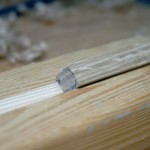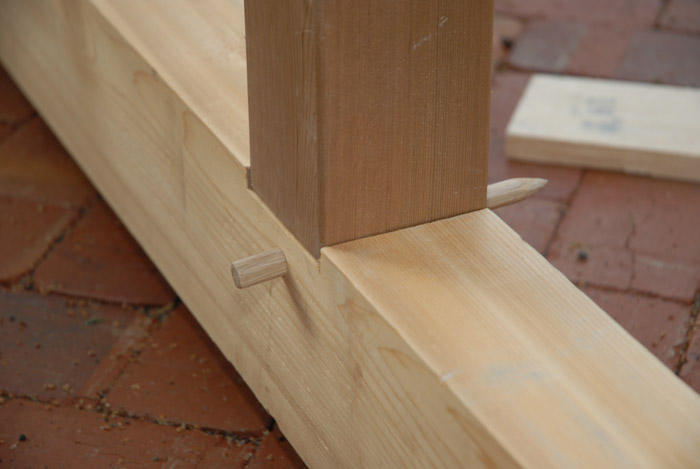The tree nail, or trunnel, is a wooden peg used to pin the tenons of a timber frame to their mortises. Commercially available pegs are turned on a lathe, but traditionally they are shaped from rived wood, often using a draw knife to round the wood while it’s secured in a shaving horse. Riving, or splitting peg blanks instead of sawing them, ensures the grain of the wood runs continuously through their entire length and minimizes the risk of the peg splitting when it is hammered home. Since timber frame joints are usually drawbored–the hole in the tenon is offset slightly from the hole in the mortise walls–the continuous grain of a rived peg is especially desirable.
Making the Pegs
Since my design called for 1/2″ diameter pegs, I had to make my own instead of buying them. I had some quarter-sawn white oak left over from a recent project that would work well since it strong and water resistant.
After sawing my stock into ~5/8″ x 5/8″ blanks, I cut them into ~8″ lengths and shaped them. A V-groove ripped in a length of 2″ x 4″ supported the blanks while I used a block plane to knock off the corners and to facet resulting octagon until it was a rough cylinder. Once I had a peg of the approximate diameter, I taper the end using a large pencil sharpener and the block plane.




Pingback: Timber Frame Porch--Base Assembly | 1910 Craftsman